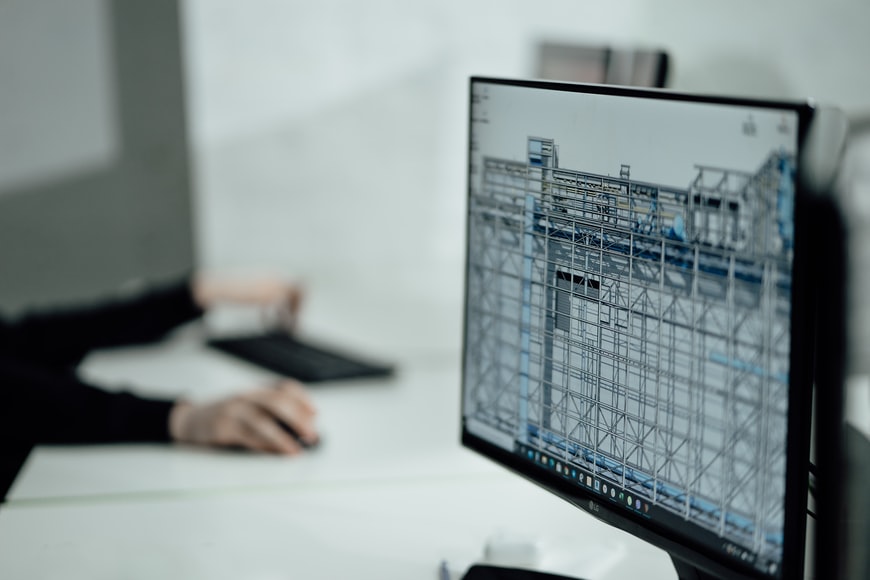
What is BIM, And How Are Digital Twins Changing the Game?
There’s been a lot of talk about BIM, and how it’s changing the built environment industry, but what is it? And how is it transforming the way construction, development and design is happening? Just read our short summary and learn everything you need to know about the opportunities in this space!
Building Information Modelling (BIM) simply means creating and managing digital information about a building, a group of buildings or infrastructure – but, actually has plenty of different ways in which it is implemented.
BIM has what are called “Maturity Levels” which tell you how advanced a form of BIM a project is using, and below is a breakdown of how these are broken down:
Basic level (Level 0) – includes unmanaged Computer Aided Design (CAD), alongside text-based information about the project.
Level 1 – expands on Level 0 by using some 3D CAD and a common data sharing system
Level 2 – was the minimum for all publicly procured projects until 2018 and puts building information into a 3D environment, with data attached to it and divided into specialist areas. There’s now UK BIM Framework which is the new standard for public projects
Level 3 – uses an integrated approach, where all vital construction information is within a single online project model
Level 4 – encompasses the above, but goes one step further incorporating social outcomes and wellbeing into the picture as well
BIM uptake has been really speeding up, although it still hasn’t been fully adopted. With a 2020 survey saying that 73% of respondents are using BIM this may seem a way off, but in comparison to the 31% in the 2012 survey, it’s a huge leap!
So with BIM covered now, what are “Digital Twins” and how do they fit into this? Basically, they serve as a real-time counterpart to the built asset – enabling full visualisation of a project. The term was defined by NASA as a way of improving their modelling of spacecraft in 2010 and represents the next frontier for digital technology in construction.
The use of this technology has some really major benefits for both delivering and managing projects, with their use of continuous data feeds ensuring that project managers know exactly what is going on with a structure or scheme.
Digital Twins can be used to explore the interaction of people with the built environment; allowing for greater safety, better energy usage and improvements to be made in user experience.
They also enable up to date augmented reality models to be made which allows everyone involved in the project to be able to get an accurate overview. And this technology doesn’t just apply to single projects, for example in modeling city environments with better detail than ever before!
To find out more about Digital Twins, see their most popular myths debunked and reveal how they plan to avoid the pitfalls that BIM has faced, join our upcoming event that we’re hosting with our friends at 3DRepo!
Building Information Modelling (BIM) simply means creating and managing digital information about a building, a group of buildings or infrastructure – but, actually has plenty of different ways in which it is implemented.
BIM has what are called “Maturity Levels” which tell you how advanced a form of BIM a project is using, and below is a breakdown of how these are broken down:
Basic level (Level 0) – includes unmanaged Computer Aided Design (CAD), alongside text-based information about the project.
Level 1 – expands on Level 0 by using some 3D CAD and a common data sharing system
Level 2 – was the minimum for all publicly procured projects until 2018 and puts building information into a 3D environment, with data attached to it and divided into specialist areas. There’s now UK BIM Framework which is the new standard for public projects
Level 3 – uses an integrated approach, where all vital construction information is within a single online project model
Level 4 – encompasses the above, but goes one step further incorporating social outcomes and wellbeing into the picture as well
BIM uptake has been really speeding up, although it still hasn’t been fully adopted. With a 2020 survey saying that 73% of respondents are using BIM this may seem a way off, but in comparison to the 31% in the 2012 survey, it’s a huge leap!
So with BIM covered now, what are “Digital Twins” and how do they fit into this? Basically, they serve as a real-time counterpart to the built asset – enabling full visualisation of a project. The term was defined by NASA as a way of improving their modelling of spacecraft in 2010 and represents the next frontier for digital technology in construction.
The use of this technology has some really major benefits for both delivering and managing projects, with their use of continuous data feeds ensuring that project managers know exactly what is going on with a structure or scheme.
Digital Twins can be used to explore the interaction of people with the built environment; allowing for greater safety, better energy usage and improvements to be made in user experience.
They also enable up to date augmented reality models to be made which allows everyone involved in the project to be able to get an accurate overview. And this technology doesn’t just apply to single projects, for example in modeling city environments with better detail than ever before!
To find out more about Digital Twins, see their most popular myths debunked and reveal how they plan to avoid the pitfalls that BIM has faced, join our upcoming event that we’re hosting with our friends at 3DRepo!
www.built-environment-networking.com



